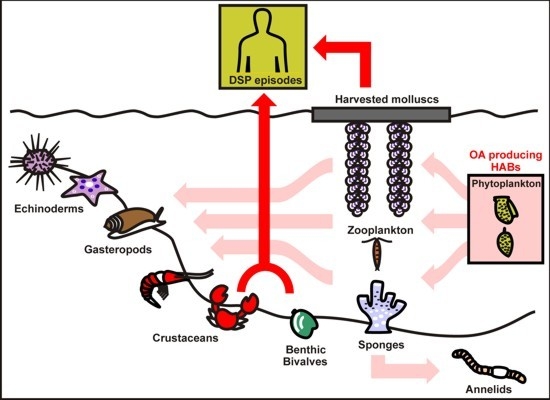Okadaic Acid Meet and Greet: An Insight into Detection Methods, Response Strategies and Genotoxic Effects in Marine Invertebrates
Abstract
Share and Cite
Prego-Faraldo, M.V.; Valdiglesias, V.; Méndez, J.; Eirín-López, J.M. Okadaic Acid Meet and Greet: An Insight into Detection Methods, Response Strategies and Genotoxic Effects in Marine Invertebrates. Mar. Drugs 2013, 11, 2829-2845. https://doi.org/10.3390/md11082829
Prego-Faraldo MV, Valdiglesias V, Méndez J, Eirín-López JM. Okadaic Acid Meet and Greet: An Insight into Detection Methods, Response Strategies and Genotoxic Effects in Marine Invertebrates. Marine Drugs. 2013; 11(8):2829-2845. https://doi.org/10.3390/md11082829
Chicago/Turabian StylePrego-Faraldo, María Verónica, Vanessa Valdiglesias, Josefina Méndez, and José M. Eirín-López. 2013. "Okadaic Acid Meet and Greet: An Insight into Detection Methods, Response Strategies and Genotoxic Effects in Marine Invertebrates" Marine Drugs 11, no. 8: 2829-2845. https://doi.org/10.3390/md11082829
APA StylePrego-Faraldo, M. V., Valdiglesias, V., Méndez, J., & Eirín-López, J. M. (2013). Okadaic Acid Meet and Greet: An Insight into Detection Methods, Response Strategies and Genotoxic Effects in Marine Invertebrates. Marine Drugs, 11(8), 2829-2845. https://doi.org/10.3390/md11082829






